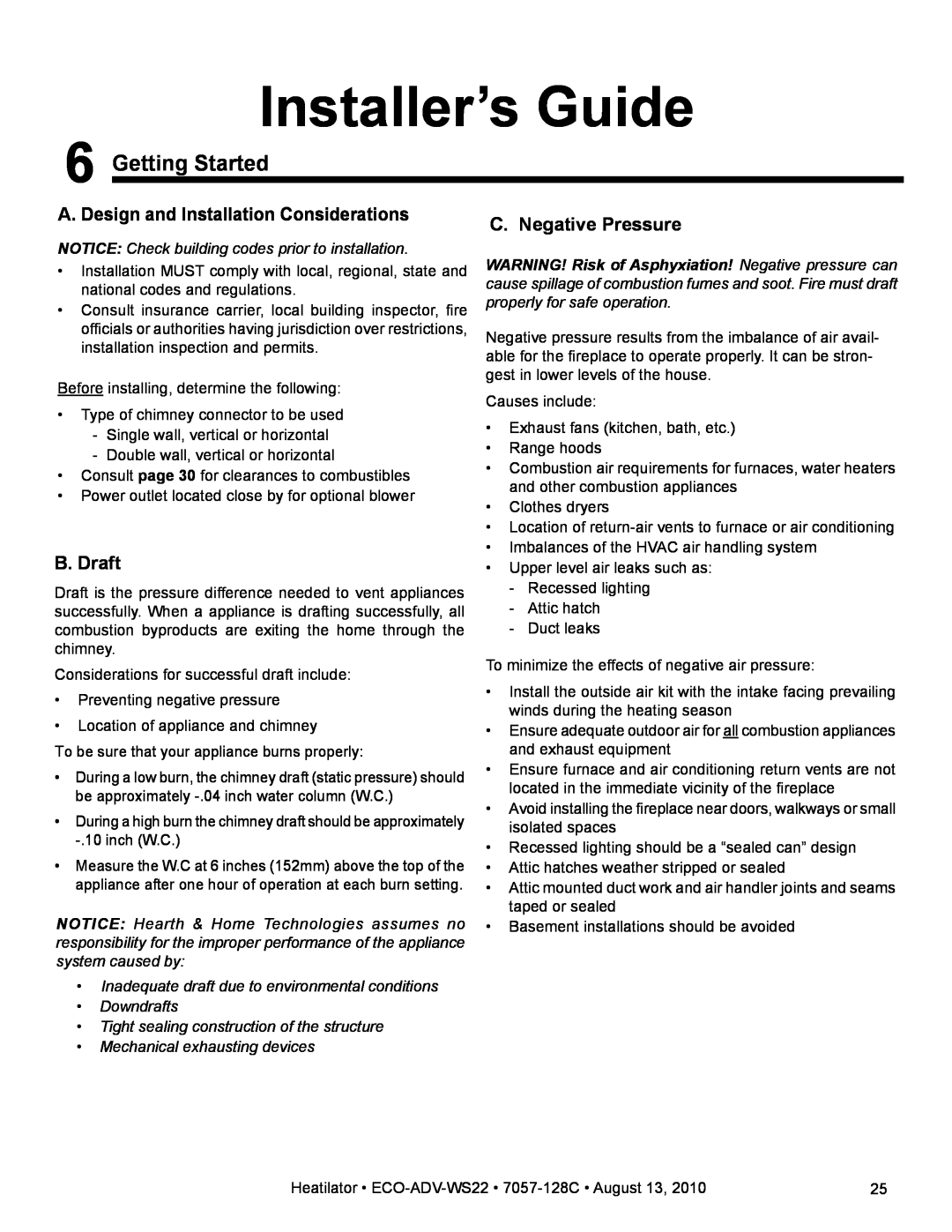Installer’s Guide
6 Getting Started
A. Design and Installation Considerations
Notice: Check building codes prior to installation.
•Installation MUST comply with local, regional, state and national codes and regulations.
•Consult insurance carrier, local building inspector, fire officials or authorities having jurisdiction over restrictions, installation inspection and permits.
Before installing, determine the following:
•Type of chimney connector to be used
-Single wall, vertical or horizontal
-Double wall, vertical or horizontal
•Consult page 30 for clearances to combustibles
•Power outlet located close by for optional blower
B. Draft
Draft is the pressure difference needed to vent appliances successfully. When a appliance is drafting successfully, all combustion byproducts are exiting the home through the chimney.
Considerations for successful draft include:
•Preventing negative pressure
•Location of appliance and chimney
To be sure that your appliance burns properly:
•During a low burn, the chimney draft (static pressure) should be approximately
•During a high burn the chimney draft should be approximately
•Measure the W.C at 6 inches (152mm) above the top of the appliance after one hour of operation at each burn setting.
Notice: Hearth & Home Technologies assumes no responsibility for the improper performance of the appliance system caused by:
•Inadequate draft due to environmental conditions
•Downdrafts
•Tight sealing construction of the structure
•Mechanical exhausting devices
C. Negative Pressure
Warning! Risk of Asphyxiation! Negative pressure can cause spillage of combustion fumes and soot. Fire must draft properly for safe operation.
Negative pressure results from the imbalance of air avail- able for the fireplace to operate properly. It can be stron- gest in lower levels of the house.
Causes include:
•Exhaust fans (kitchen, bath, etc.)
•Range hoods
•Combustion air requirements for furnaces, water heaters and other combustion appliances
•Clothes dryers
•Location of
•Imbalances of the HVAC air handling system
•Upper level air leaks such as:
-Recessed lighting
-Attic hatch
-Duct leaks
To minimize the effects of negative air pressure:
•Install the outside air kit with the intake facing prevailing winds during the heating season
•Ensure adequate outdoor air for all combustion appliances and exhaust equipment
•Ensure furnace and air conditioning return vents are not located in the immediate vicinity of the fireplace
•Avoid installing the fireplace near doors, walkways or small isolated spaces
•Recessed lighting should be a “sealed can” design
•Attic hatches weather stripped or sealed
•Attic mounted duct work and air handler joints and seams taped or sealed
•Basement installations should be avoided
Heatilator • | 25 |
